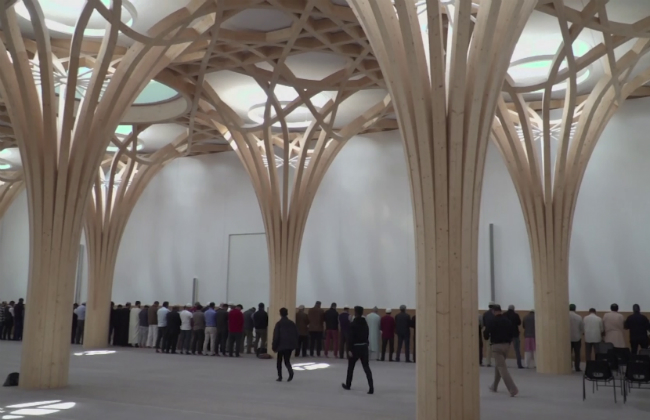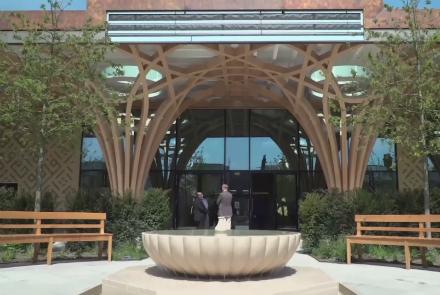A new multi-million-pound eco-mosque has opened in the centuries-old university city of Cambridge. Billed as Europe’s first green mosque, it's an inclusive place of prayer, debate, and learning.
With its golden dome, it looks like many other mosques on the outside. But this Islamic house of prayer has been built to operate at an almost zero carbon footprint.
Billed as Europe's first eco-mosque, the founders say it’s been designed to be sustainable.
“We have a very light carbon footprint. As you can see during the day we don’t need any electricity because natural light is supplied through these amazing wells of light and the windows and the walls of the building,” said Tim Winter, the Chair of the Board of Trustees at New Cambridge Mosque.
Sustainable features are a fundamental part of the building.
Getting onto the roof is a bit tricky, but as this photo shows, it’s covered in solar panels which provide power.
Inside the building is the central dome with its blue stained-glass windows.
On the ceiling surrounding the dome are several light wells - their panels open to add ventilation and control the temperature of the mosque.
According to Winter, the mosque has been built on a principal of sharing traditions from all parts of the globe.
He highlights vaulting and Gothic features which are a nod to the history of Cambridge, while the mosque also includes Arabesque design.
“We are symbolically in the fabric of the building itself trying to bring together East and Western narratives that are very often seen as being in a state of permanent conflict,” said Winter.
As Winter claims, a similar internal structure is visible inside King's College Cambridge.
Tree-like roots push out from the ground and fan out at the ceiling in shapes reminiscent of branches.
Winter says Cambridge has a diverse population of around 5,000 Muslims from scores of countries and a large non-permanent student Muslim population.
Muslims are thought to have started moving to Cambridge from the late 1950s.
But they often had to pray in homes or in small non-purpose-built mosques in the city.
There have long been ideas for a large mosque in Cambridge, and the land for this site was eventually bought 11 years ago.
“I do hope that inter-religious dialogue will also take place here. So we will be building bridges from this building,” said Imam Sejad Mekic.
Its facilities include a cafe, teaching and children's areas, meeting rooms for both Muslim and non-Muslim communities, and accommodation for its Imams' family and visiting scholars.
The mosque also aims to be gender inclusive and is non-sectarian.
The prayer hall has room for about 1,000 worshippers and is eight meters high with the roof supported by 16 tree columns.
Architects Marks Barfield designed the site on the theme of a calm oasis.
Its Islamic garden has a water feature and 20 cypress trees.
And the facade of the complex is finished in brick, complementing the materials already found in the built-up local neighborhood of Victorian terraced houses.
The mosque has no minaret and no call to prayer will be broadcast outside the building.


